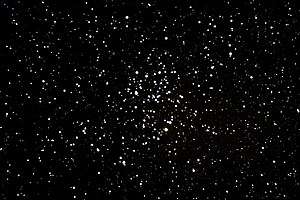M50 | NGC 2323 | Open Cluster | Monoceros | 2,900 Light Years Away
Messier 50 is an open star cluster located in the constellation Monoceros, first cataloged by the French astronomer Charles Messier in 1772. Positioned approximately 3,000 light-years away from Earth, this celestial assembly is part of the Milky Way galaxy. The cluster spans a region of about 16 light-years in diameter and is easily visible with binoculars or small telescopes.
Comprising over 200 stars, Messier 50 showcases a diverse array of colors, indicative of variations in temperature and composition among its stellar members. The stars within this open cluster are gravitationally bound, forming from the same interstellar cloud of gas and dust. Messier 50 is a relatively young cluster, with an estimated age of around 78 million years, making it a valuable object of study for astronomers investigating the early stages of stellar evolution.
Observations of Messier 50 contribute to our understanding of open star clusters, offering insights into the dynamics of stellar systems and the processes involved in the formation and evolution of stars within our galaxy. The study of such stellar groupings helps astronomers unravel the complexities of star birth and the interactions between stars in shared cosmic environments. Messier 50, with its distinctive appearance and youthful stellar population, adds to the ongoing narrative of star birth and evolution within the intricate tapestry of the cosmos.

